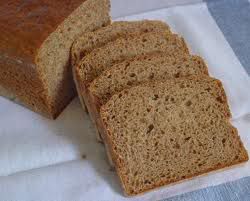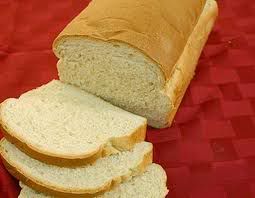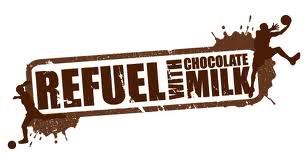The first thing you will need to understand is how to utilize your body’s insulin spikes. There are different times of the day you want to take advantage of spiking your insulin. Why on Earth would I want to do that you say? Insulin is a powerful anabolic hormone that helps your body utilize testosterone and growth hormone that would otherwise go to waste if not taken advantage. So the name of the game is to spike your insulin when you have high hormone levels. So when are your hormone levels the highest?
 When you go to sleep at night your body repairs itself by elevating your hormone levels. When you wake up your hormone levels start to fall again. So as soon as you get up in the morning it’s a race to get something in your stomach to spike your insulin in order to take advantage of your high hormone levels. Another great time to spike your insulin is right after your workout. Partly to return your glycogen levels back to normal before your muscles go catabolic, and partly because your hormones are again at high levels. This is where having a good knowledge of glycemic index comes in handy. You can always look up the glycemic index of foods online. Here is a link to a list of commonly consumed foods and their glycemic index ratings: http://www.diabetesnet.com/food-diabetes/glycemic-index
When you go to sleep at night your body repairs itself by elevating your hormone levels. When you wake up your hormone levels start to fall again. So as soon as you get up in the morning it’s a race to get something in your stomach to spike your insulin in order to take advantage of your high hormone levels. Another great time to spike your insulin is right after your workout. Partly to return your glycogen levels back to normal before your muscles go catabolic, and partly because your hormones are again at high levels. This is where having a good knowledge of glycemic index comes in handy. You can always look up the glycemic index of foods online. Here is a link to a list of commonly consumed foods and their glycemic index ratings: http://www.diabetesnet.com/food-diabetes/glycemic-indexSo what if you’re out and about and don’t have a chart to reference the glycemic index of foods when you’re grocery shopping? A good way to estimate how your insulin will be affected by different foods is to simply “eyeball it”. The more processed a carbohydrate source is, the higher in glycemic index that food will be. For example wheat bread vs. white bread.
With wheat bread you can actually see the grains, and see that it is a much less processed product than white bread. White bread is higher in glycemic index, because in order to make it, the wheat is ground down completely. Cereals like Cheerios you might think would be good for you because it’s made with oats, but if you ever crushed a Cheerio it turns into dust, there are no grains. So Cheerios have a high glycemic index rating. Basically the more your body has to work to digest a carbohydrate, the more slowly that carbohydrate will be turned into usable blood sugar, and the less of a response your insulin will react to the consumption of that food.
Other than the two exceptions where you eat high glycemic index carbohydrates, for the rest of your diet you are going to want to stick with lower glycemic carbohydrate sources. If you ate high glycemic carbohydrates all the time your insulin levels would constantly be up and down causing your body to store fat when the insulin is down. Eventually your body would lose its sensitivity to insulin releases causing your body to go pre-diabetic. So as you can see you want low glycemic carbs throughout the day. The low glycemic carbs will allow your body to store up glycogen (usable blood sugar) in your muscles which is what they use for energy during your workouts. The low glycemic carbs will also allow your insulin levels to keep steady so the carbs aren't stored as fat.
 Another way to help control insulin is eat more fiber! There are two types of fiber soluble, and insoluble. The type that helps your body from having a higher insulin spike is soluble fiber. The soluble fiber slows the digestion of the food reducing the body’s need for releasing a greater amount of insulin. Insoluble fiber is great to add to your diet too. This is the type of fiber that adds “bulk” to your food and keeps things moving through your intestinal tract. Adding insoluble fiber to your diet will keep your digestive system healthy and happy, which is very important. Your digestive system is where your body gets all of its nutrients from, which in turns feeds your muscles! So you need to be sure and take very good care of your digestive system, and that my friends is a whole other post all together.
Another way to help control insulin is eat more fiber! There are two types of fiber soluble, and insoluble. The type that helps your body from having a higher insulin spike is soluble fiber. The soluble fiber slows the digestion of the food reducing the body’s need for releasing a greater amount of insulin. Insoluble fiber is great to add to your diet too. This is the type of fiber that adds “bulk” to your food and keeps things moving through your intestinal tract. Adding insoluble fiber to your diet will keep your digestive system healthy and happy, which is very important. Your digestive system is where your body gets all of its nutrients from, which in turns feeds your muscles! So you need to be sure and take very good care of your digestive system, and that my friends is a whole other post all together. One little tip before I go: A great post workout drink when you can't get the protein and the carbs? Chocolate milk! No joke chocolate milk gets the job done! I read up on a study where cyclists were told to ride for a certain amount of time, maybe two hours or something. Then one was given water, another was given a sports drink, another chocolate milk, and another a protein and carbohydrate fortified recovery drink. Then they were told to get back on their bikes and ride till they “bonked” (a term used by endurance athletes describing when they completely run out of energy). The cyclist that drank water dropped almost instantly, the sports drink cyclist dropped out a little later, and the other two went a little while longer, ending up pretty much tying. So yeah chocolate milk is awesome. Apparently the combination of carbs and proteins found in chocolate milk are extremely conducive to recovery.






No comments:
Post a Comment